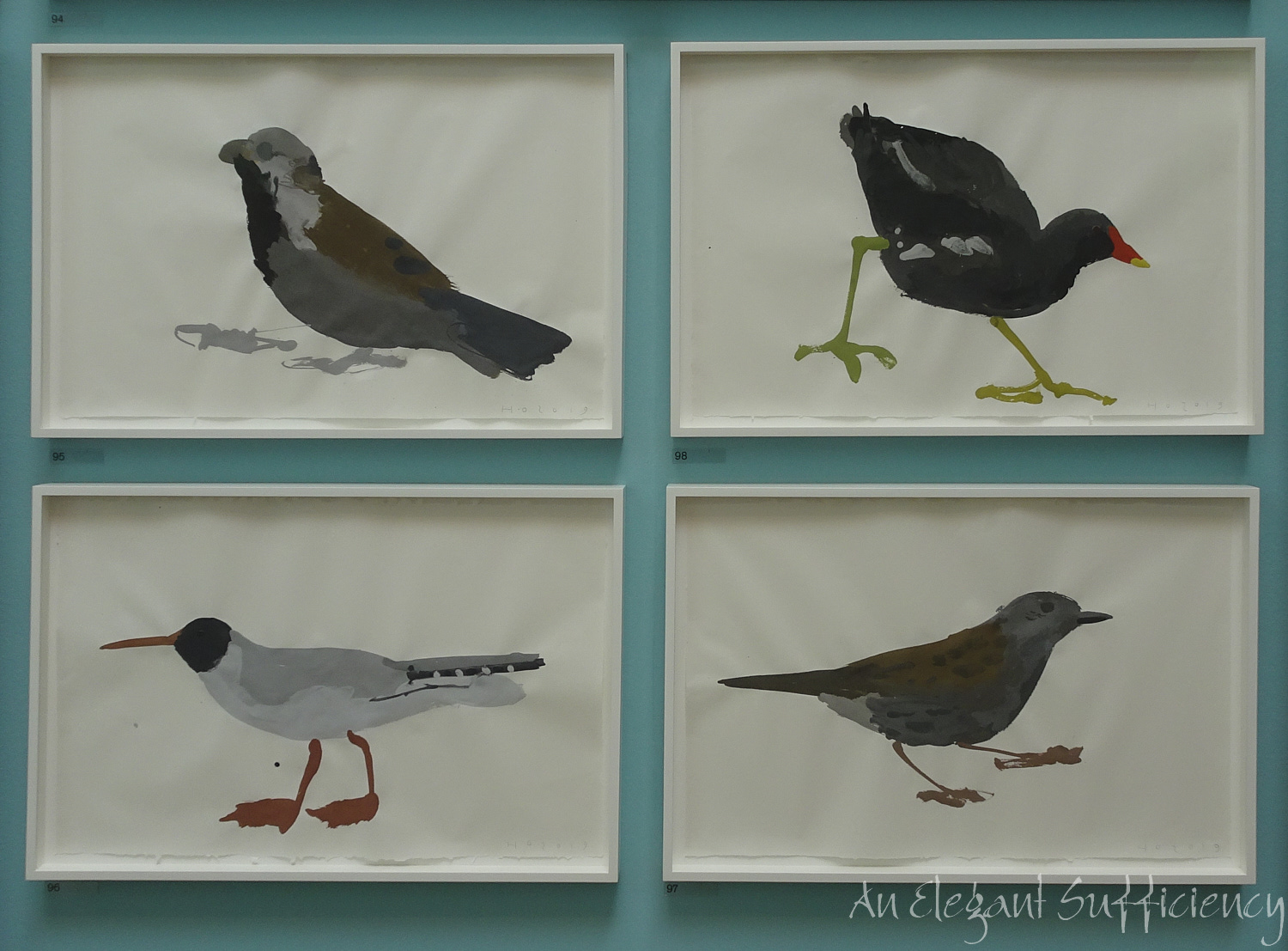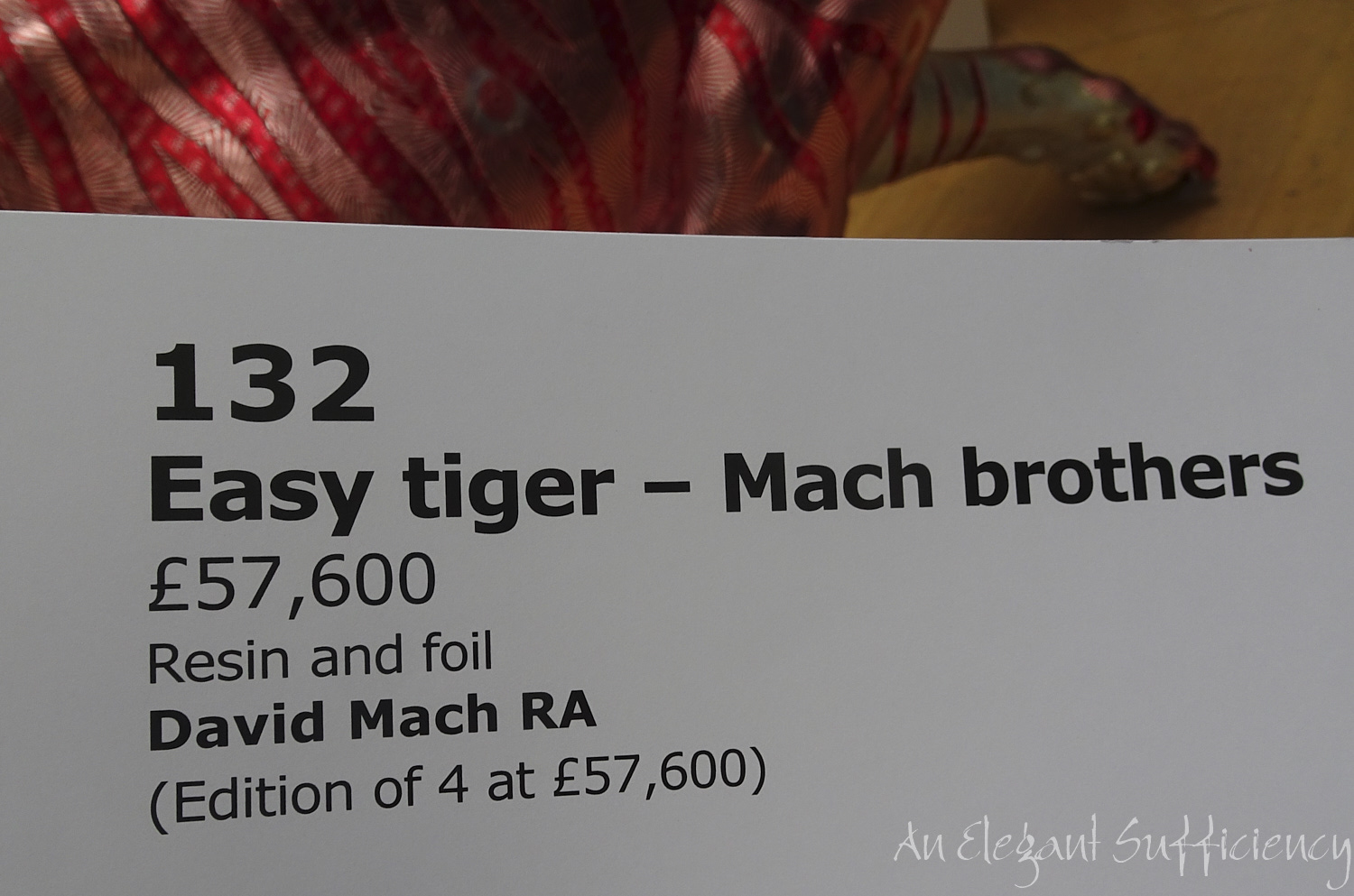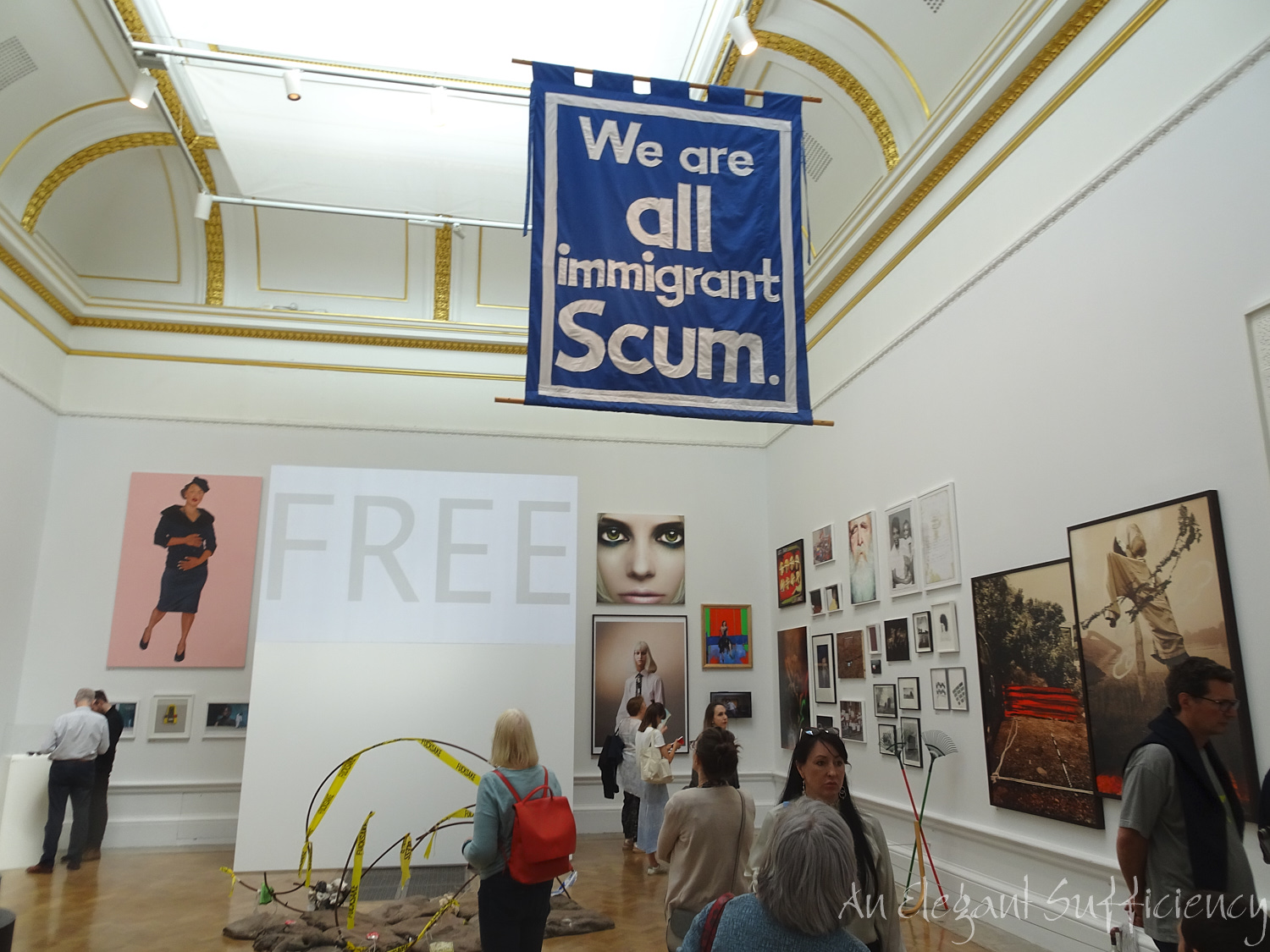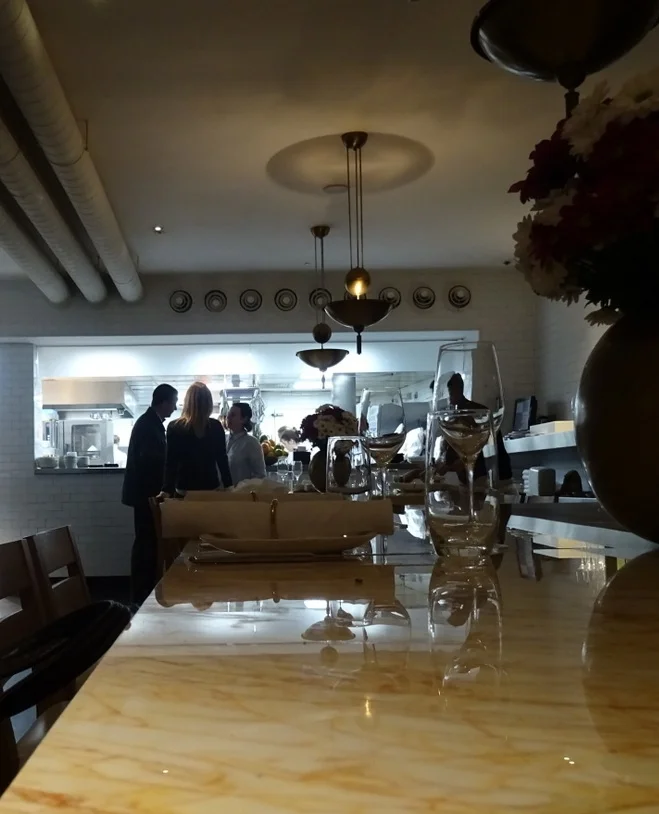But is it art?
An age-old question, I know.
We were in London on Friday, originally to meet up with Fiona, our friend from Wellington, New Zealand, who was in the country to attend a transport conference in Manchester. We couldn’t let her be in London overnight without the joy of our company for dinner, could we? Neither could we waste an afternoon in Piccadilly when culture was staring us in the face in the form of the Royal Academy Summer Exhibition.
Of course, the Summer Exhibition is always filled with an entertaining mix of exhibits and the added fun of a price list makes for lively discussion too. Perhaps it was a mistake to read a review beforehand though - in particular, this one.
Never mind - let’s pretend we hadn’t read all of that as we stepped into the central hall “menagerie”, where we began enthusiastically taking note of this and that…what caught our eye and what would we like to take home (in our dreams).
The first piece to pique my interest was the tiny rectangular work to the left of the door, second on up from that person’s head…
This one. Measuring no more than 7 or 8 inches across, it was titled “Animal” and made of plaster and paint, by Gillian Singer. It’s available in an edition of 5, priced at £3200.
It prompted our first discussion.
The second discussion was provoked by work on that same wall, this time a series of four paintings by Humphrey Ocean RA, gouache on paper. Sparrow, Moorhen, Black-headed Gull and Dunnock were priced at £6000 each. Whilst undoubtedly work of great merit, I couldn’t imagine spending that kind of money on what appeared to be an ephemeral piece of art. Or maybe I was missing something? What (apart from the letters RA after the artist’s name) sets these pieces apart from the kind of works on show in a village art group exhibition? One thing was sure, my definition of “art” as something that provokes a reaction was confirmed here!
I have mixed opinions of Banksy’s work. Some of it is very clever and the wit can offer an unexpected interpretation to a challenging concept. But I’m not sure it works so well in a gallery like this (and in case you’re wondering, there was a * in place of a price - “refer to sales desk”)
As you can tell, we were finding plenty to interest and amuse us even before we’d gone beyond the first room and pottering about, we each made the same observation at around the same time. We looked at one another, smiled and said “Tunnocks!”
The next question was, how many did the artist have to eat?! (The same question was on so many lips, I’m sure!) And since the M&S teacakes are nothing like as good as the Tunnock’s version, would we have persuaded someone else to eat those?
What fun!
What?!
(Were we speechless at the price or the fact that they made four of them?)
Beyond the menagerie, we set off through the other rooms, finding a mixture of the intriguing and the surprisingly ordinary. Yes, plenty to talk about - the fact that Anselm Kiefer’s work had been bestowed with s p a c e unlike any other exhibit in the show, but mostly that there were so very few works here that we’d have wanted to take home with us, given the choice.
And unusually for this particular exhibition, “is it art?” By my simplistic definition, anything that gets us talking is indeed art of some kind. But does it belong here, in a national gallery where only the best work is selected from the thousands and thousands of submissions? This work, entitled Crackers, has something to say for sure. It’s original and provokes a reaction - but does it belong here in this exhibition? (by John Smith (!) priced at £520, available in an edition of 80 at £380)
It was around here that we began to wonder if we ought to have waited to read that review…
I sought refuge in the architectural models, the fascinating drawings of structures real and imagined. Nothing much for sale here, just concepts on display and the beauty of those exquisite details that need to be considered. Works of art with a bit less to say.
In the room filled with icebergs and austere scenes, it was the bear who caught my eye, unsurprisingly. Teetering on what looked like a tractor tyre, he was cleverly formed from plaster and straw - Nicola Hicks created “Bear from a Dump Circus” (£80 000) and I wonder where it will find a home?
John Davies’ “My Ghosts” may be the kind of work created especially for this exhibition - it’s difficult to imagine a place where it might work beyond a gallery setting
but I can see the need for larger, three dimensional works to offset the otherwise unrelenting walls of rectangles which after a while begin to merge into one arrangement rather than individual works.
A couple of those rectangles caught my eye for different reasons however. Firstly, this one: Blonde on Blonde by Grace O’Connor, a clever study of portraits worked into a trompe'd’oeil panel (£5 500), each individual snippet worth a closer look.
And this one, “Sore with a Bare Head (Chemotherapy Diary)” by Stella Davis, worked in watercolour and pen. Undoubtedly a clever piece of art, well drawn and provoking discussion and opinion. But does it belong here? For some reason, I found it strange to submit such a personal record to an exhibition in this way. Even stranger to put a price of £750 on it.
So yes, I’d say we felt it was a curate’s egg of a show this year with just the occasional exception. The price tag notwithstanding, we’d have found the Tunnock’s Tiger an amusing companion to Anton and Olaf, our house-bears, but otherwise, there was just one work that could have found its way home with me. Surprisingly so, since I don’t usually go for figurative works like this but Girl on a Bicycle, a bronze by James Butler RA just seemed to capture that wild abandon that comes with youth, speed and a carefree spirit. The energy and detailed observations pleased me no end and I thought it a relative snip at just £12 500.
Of course, now I’ve spent an hour or so looking back through the (unillustrated) list of works, I think that a second visit might be needed, to see the bits I missed!































